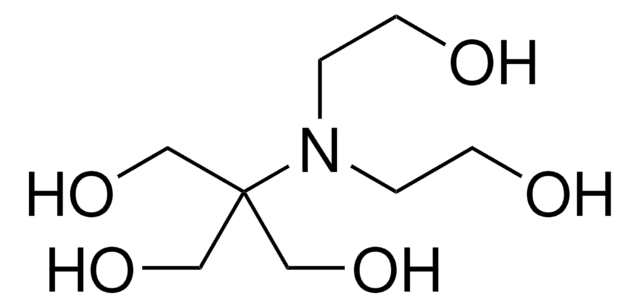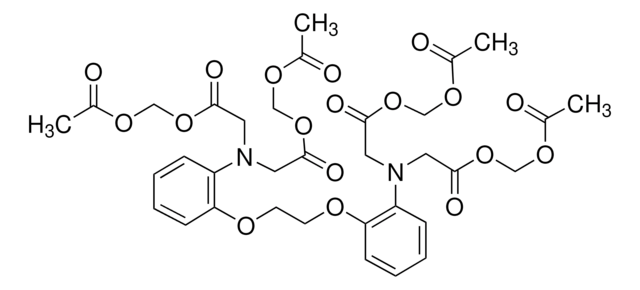Q2128
Quisqualic acid
powder
Sinónimos:
β-(3,5-Dioxo-1,2,4-oxadiazolidin-2-yl)-L-alanine, 3-(3,5-Dioxo-1,2,4-oxadiazolidin-2-yl)-L-alanine
About This Item
Productos recomendados
form
powder
Quality Level
color
white to off-white
solubility
ethanol: <0.17 mg/mL
H2O: 0.5 mg/mL
0.1 M HCl: 1.4 mg/mL
1 M NH4OH: 20 mg/mL
organic solvents: insoluble
storage temp.
2-8°C
SMILES string
N[C@@H](CN1OC(=O)NC1=O)C(O)=O
InChI
1S/C5H7N3O5/c6-2(3(9)10)1-8-4(11)7-5(12)13-8/h2H,1,6H2,(H,9,10)(H,7,11,12)/t2-/m0/s1
InChI key
ASNFTDCKZKHJSW-REOHCLBHSA-N
Gene Information
rat ... Gria1(50592) , Grik1(29559) , Grin2a(24409) , Grm1(24414) , Grm2(24415) , Grm4(24417) , Grm5(24418)
¿Está buscando productos similares? Visita Guía de comparación de productos
General description
Application
Biochem/physiol Actions
Storage Class
11 - Combustible Solids
wgk_germany
WGK 3
flash_point_f
Not applicable
flash_point_c
Not applicable
ppe
dust mask type N95 (US), Eyeshields, Gloves
Elija entre una de las versiones más recientes:
¿Ya tiene este producto?
Encuentre la documentación para los productos que ha comprado recientemente en la Biblioteca de documentos.
Nuestro equipo de científicos tiene experiencia en todas las áreas de investigación: Ciencias de la vida, Ciencia de los materiales, Síntesis química, Cromatografía, Analítica y muchas otras.
Póngase en contacto con el Servicio técnico








